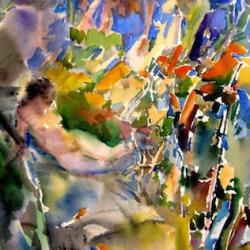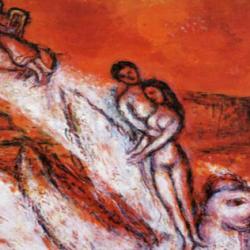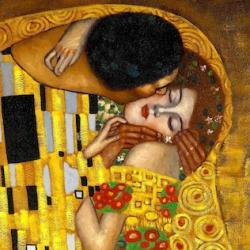“My belived” ( dodi ) is as a cluster ( eshchol ) of camphire or henna from the vineyards (Song 1:14). The word eshchol is typically used for bunches of grapes. The dream of the cup-bearer that Joseph interpreted involved wine from eshchols of grapes (Genesis 40:10), and the spies brought back giant clusters of grapes from the land of promise (Numbers 13:23-24). In the Song of Moses, he predicts that the clusters of Israel will become bitter (Deuteronomy 32:32). Elsewhere in the Song, the bride’s breasts are clusters, first of palms and then like grapes (7:7-8). Here the clusters are not clusters of grapes, but they are in a vineyard (v. 14b), and so the simile connects to grapes and wine. The use of that term evokes the scene of the spies in the land, and the promise that the land will produce a super-abundance of good things. Dodi is like a promised land to his bride, as she is later to him. We are back to the opening lines of the poem: His love is better than wine. Between her breasts at night, he is like intoxicating, soothing, comforting wine.
But the clusters in the Song are not clusters of grapes.
They are clusters of kofer . The word is from a root that means essentially “cover.” It can be a literal cover, and is translated as “pitch” or “tar” in some passages, pitch or tar that covers the ark, for instance (Genesis 6:14). Since it means “covering,” it also takes on the connotation of “ransom” (Exodus 21:30; 30:12) or atonement and satisfaction (Numbers 35:31-32). A form of this root is used in the phrase Yom Kippur, which means, most literally, Day of Coverings. It’s the day when the Lord covers the sins of Israel with the blood of a goat and the release of a scapegoat. It’s the day when the “covering” ( kapperet ) of the ark is spread with blood. It’s the day when the priest takes off his garments of glory and gets re-covered. In the Song and in one other place, it is translated as a reference to a plant (cf. 4:13), a camphire that the Jewish encyclopedia defines as “a shrub growing to a height of between eight and ten feet, and bearing cream-colored and very fragrant flowers.” It was used as a dye for hair and skin and lasted for a few weeks. To say that he is a cluster of camphire is partly to emphasize, again, that he brings a pleasing aroma. The shrub is called a kofer , from kafar , either because the plant itself provided a “covering” since it was so big, or because the dye made from the plant was a “covering” for hair and skin.
Either way, Dodi is compared here to a cluster of covering, a covering cluster. His lover is like wine, and it is also shade, protection, covering, ransom.















